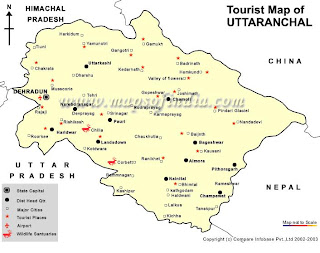
The name Himalayas evokes different emotions. For some it is the land of high mountains and wonderful sceneries. Many others consider the territory as the divine sanctuary impregnated with mysteries surrounding enlightened wandering ascetics, mystic yogis and tibetan lamas possessing supernatural powers. The mountains are the universities of spiritual knowledge where, over the the centuries, the unbroken chain of Himalayan Yogis conducted meditative experiments to explore the secrets of mind and consciousness while metamorphising into highly evolved and self-realised beings. It is also a land of legends and myths.
There is not a region in India which holds such an anthropological diversity – we find people of Indo-Iranian, Mangoloid, Central Asian and Indo-Aryan ethnicities living in several pockets and having religious beliefs in Hinduism, Christianity, Budhism, Islam and some even practicing central asian Shamanism. It is the combination of adventure, unparalleled beauty of nature, solitude, temples and places having spiritual vibes and the opportunity to interact with godmen that entices and drags me there. The treks provide me an escapism from the so called “civilized world” into another zone which operates with a different set of rules. Here we succumb to the forces of nature and God. Our life is at the mercy of mother nature.
The mountains also hold several ancient Hindu temples of importance. I chose Panchkedar trek in 2009. Panchkedar consists of five Shiva temples (Kedarnath, Madhamaheshwar,Tunganath, Rudranath and Kalpeshwar) spread 140 km over the Uttaranchal Himalayas - accessible by trekking on the steep mountain footpaths , crossing scores of water falls , beautiful meadows and virgin villages perched on the mountain peaks and deep forests ruled by bears, leopards and deers.
I passed through villages very little influenced by the outside civilization and exhibiting an ancient charm. Life moves at a slow rhythm and with utmost tranquility and peace. The beauty of nature can not be described by words nor can be captured in any frame of photography. A village might consist of 10-15 houses - old houses having wooden walls , mud plastered floor and roof covered with sliced stones. Almost all the villages are provided with Solar photovoltaic panels at subsidised rates by the government. Agriculture ( different varieties of rice , wheat , lentils etc ) is their mainstay. The size of the land and the count of the cows/goats symbolizes wealth , but in our world outside the mountains cash stashed in Bank accounts defines wealth. Enviously, they almost lead a currency free life and engage in the ancient barter system which ensures that farm produce is exchanged which is very practical considering the remoteness of the villages and considering that many villages are cut off from the rest of the world for six months of the year during the winter. I was charmed by the simplicity and courtesy of the villagers. For people like me escaping from the mean and fast urban civilization and concrete jungles, meeting a villager with a smiling face and a welcoming "pranam" with folded hands is more than enough to transport to salvation.
For a person living in the plains at sea level, it was a punishing trek for the body through the high mountains. It is not rare to find wild animals( one strategy we discussed to save our life from Wild Bear - run down the mountain and the bear will not be able to attack since its eyes will be blocked by the falling hair !! good gracious , we did not encounter Mr.Bear to test this idea). I sighted only 2 leopards , wild boars & porcupines. The leopards were surprisingly shy of humans.
I clocked 10-15 km uphill on many days skipping lunch and eating dinner very late. In order to stick to the itinerary and schedule , I even covered distances in the night. But it was a dangerous decision to move in the night due to the threat of animals around. I still can not reach a conclusion which is tough - walking up or down. But I was let down by my weak lungs pulling a heavy 97 kg body.The continous climb and perpetual sweating was pretty much exhausting. After having completed the journey overcoming these hurdles, I realize that it is the triumph of the mind ( emboldened by the strong will) over the body. Fear of death is the foremost enemy that needs to be conquered and once the fear element is neutralised , the mind gets strong ( the sages say : dwaitad vai bhayam bhavati, advaitad vai amritah bhavanti => fear derives from duality, from the desire for self preservation. Fear of death can not be won over unless one realizes his unity with the non-dual absolute and as long as the person perceives himself/herself as an individual, the person remains afraid of losing the individuality )
Legend - Mahabharat era
The Pandavas after annihilating the Kauravas in the Kurukshetra war went to the Himalayas to meet Lord Shiva, but the Lord tried to avoid the meeting due to the Gotra Hatya commited by them , disguised as a bull tried to plunge beneath the ground. But Bhima was quick and caught the the bull by the hind legs. In the struggle that followed, the different parts of Lord Shiva's body appeared at various places in the Himalayas. The forelegs showing up at Pashupatinath in Nepal, the rump of the bull at Kedarnath, the torso including the navel at Madhmaheshwar, the arms at Tungnath, the face at Rudranath, and the matted hair at Kalpeshwar

















